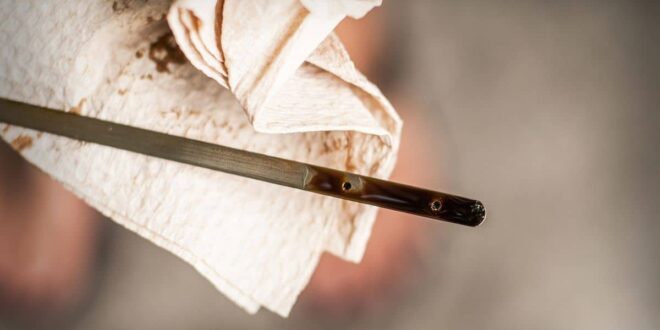It’s important to check your car engine once a month to be sure there’s enough oil and the oil is not contaminated. Engine oil helps to lubricate the engine parts ensuring smooth running. Ignoring this can lead to lack of engine performance and may lead to engine knocking. If you notice it’s dirty or it’s smelling, it’s time to change the oil. Some cars have engine oil check up tracker, so you will be hinted on the time to change your oil.
To check your oil you can follow the following steps:
- Pull out the dip stick and wipe it off on a clean, lint-free rag: Be sure the engine is cold (or has been off for at least ten minutes) before you check the oil. The location of the oil dipstick depends on whether your vehicle has an in-line engine (rear-wheel drive) as shown here. If you have a transverse engine (front-wheel drive) your dipstick should be located near the front of the engine, as shown here.
- Pull the dipstick out again and look at the film of oil on the end of the stick: Note how high the oil film reaches on the dipstick and the condition of the oil, and add or change the oil as needed. You don’t add oil into the tiny tube that the dipstick sits in; that’s just asking for messy frustration. Look for a screw-off cap on top of the largest part of the engine. It could be blank or it could be labeled “Oil Cap” or something similar, and it might even indicate which grade of oil you ought to be using in your car. Unscrew that cap and add oil as needed.
- Put the dipstick back into the pipe. You’re done! If your oil looks clean enough but only reaches the “Add” level on the dipstick, you need to add oil. You can buy oil the next time you fill up with gas at the service station or you can find it at auto supply stores, supermarkets, discount stores, and large drugstores.
REMEMBER: Oil turns black pretty quickly, but that doesn’t affect the quality. Rub a little between your thumb and index finger, and if it leaves a dirty smudge, it probably needs to be changed.
 Spot Dem Everything About Cars
Spot Dem Everything About Cars







Thanks, notice